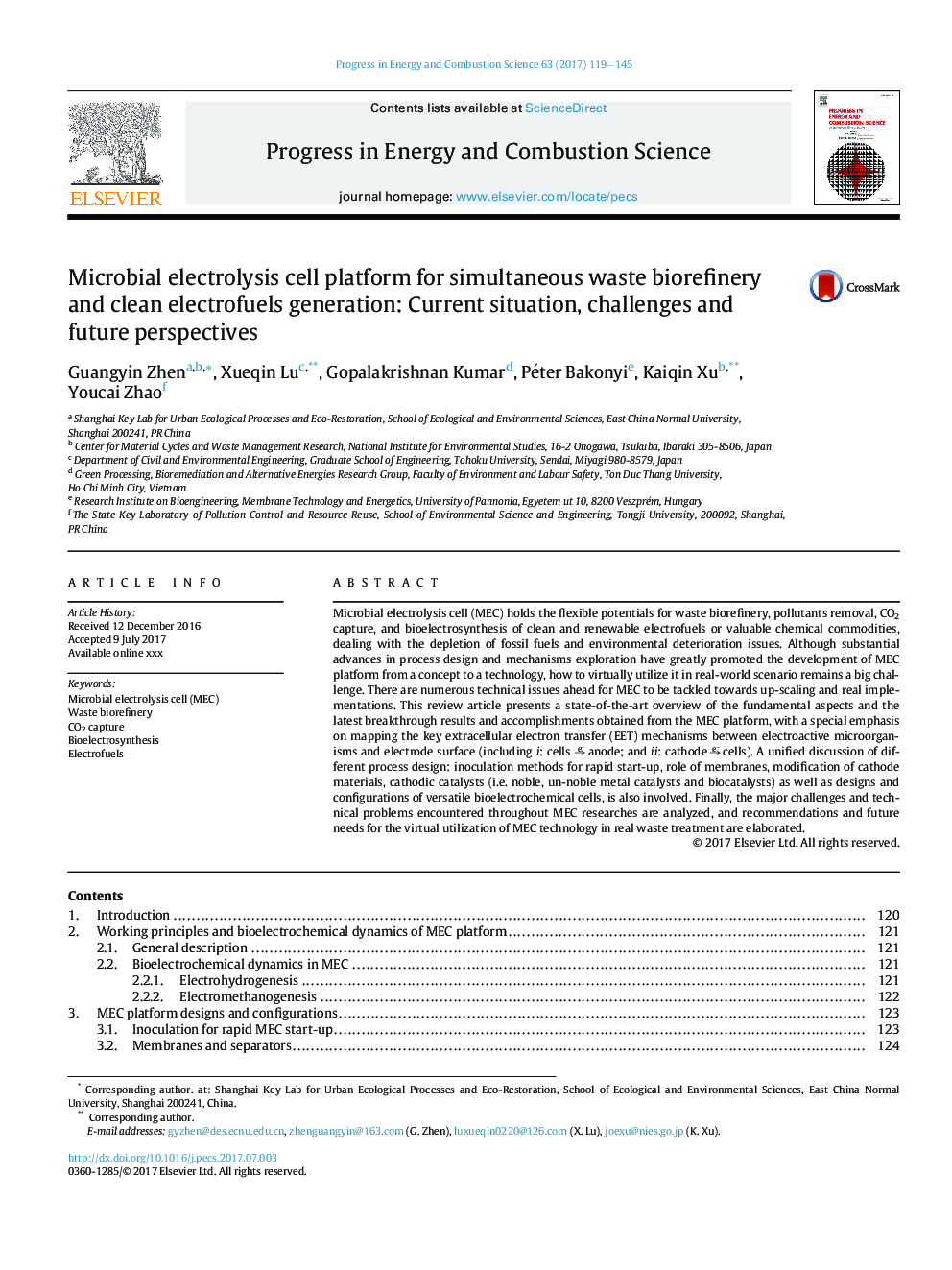| Article ID | Journal | Published Year | Pages | File Type |
|---|---|---|---|---|
| 4911014 | Progress in Energy and Combustion Science | 2017 | 27 Pages |
Abstract
Microbial electrolysis cell (MEC) holds the flexible potentials for waste biorefinery, pollutants removal, CO2 capture, and bioelectrosynthesis of clean and renewable electrofuels or valuable chemical commodities, dealing with the depletion of fossil fuels and environmental deterioration issues. Although substantial advances in process design and mechanisms exploration have greatly promoted the development of MEC platform from a concept to a technology, how to virtually utilize it in real-world scenario remains a big challenge. There are numerous technical issues ahead for MEC to be tackled towards up-scaling and real implementations. This review article presents a state-of-the-art overview of the fundamental aspects and the latest breakthrough results and accomplishments obtained from the MEC platform, with a special emphasis on mapping the key extracellular electron transfer (EET) mechanisms between electroactive microorganisms and electrode surface (including i: cellsâeâanode; and ii: cathodeâeâcells). A unified discussion of different process design: inoculation methods for rapid start-up, role of membranes, modification of cathode materials, cathodic catalysts (i.e. noble, un-noble metal catalysts and biocatalysts) as well as designs and configurations of versatile bioelectrochemical cells, is also involved. Finally, the major challenges and technical problems encountered throughout MEC researches are analyzed, and recommendations and future needs for the virtual utilization of MEC technology in real waste treatment are elaborated.
Related Topics
Physical Sciences and Engineering
Chemical Engineering
Chemical Engineering (General)
Authors
Guangyin Zhen, Xueqin Lu, Gopalakrishnan Kumar, Péter Bakonyi, Kaiqin Xu, Youcai Zhao,
